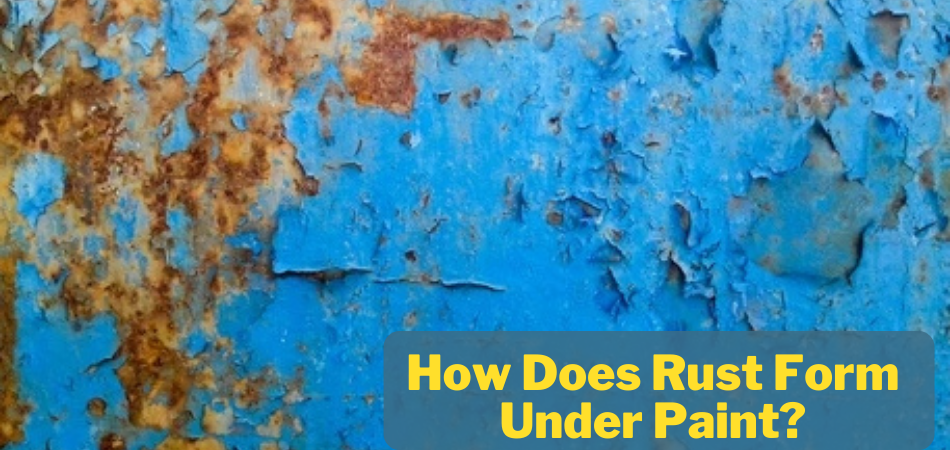Rust is a chemical reaction when metal, water, and oxygen come into contact. When this reaction happens with the metal on your car, it can cause the paint to become unstable and flake off. Likewise, the presence of moisture, either in the air or on the body of your vehicle, can lead to rust forming under paint. So then, how does rust form under paint?
Water is the key to rust. Water can enter paint film in several ways, including through the substrate it’s protecting. Then, the water molecules migrate through the film, looking for oxygen molecules to bond with. Where these two elements meet, corrosion begins.
Also, rust can form underneath paint due to a few reasons. The first is that the surface was not prepared or cleaned properly before painting. So, for example, if there was any grease, oil, or rust remaining on the metal when it was painted, that is where future rust will form.
Therefore, you must monitor any painting on your car to ensure the coating is not covering any rust. If you have any rust, you should remove it prime the area before painting.
Contents
What Is Rust?
Rust is the reddish-brown patina that is often present in ferrous materials. It is the wear or alteration of a metal or alloy, either by direct chemical attack or by electrochemical reaction. Environmental conditions and the action of certain gases generate a coppery and deteriorated appearance on metals or alloys.
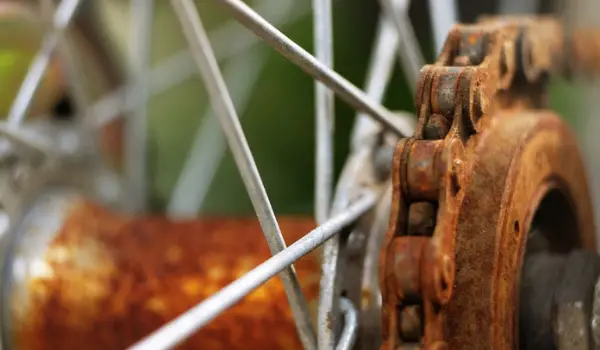
Even coated metals are known to often show this type of wear. Rust begins to appear when there is no form of anti-rust protection underneath the paint. If care is not taken, corrosion tends to completely damage the metal.
Why Does Rust Occur?
It is an electrochemical phenomenon caused by a massive flow generated by the chemical differences between the parts involved. A current of electrons is established when there is a potential difference between one point and another.
When electrons are transferred and migrated from a chemical species to another species, it is said that the species that emits them behaves like an anode and oxidation takes place – and the one that receives them behaves like a cathode, and reduction takes place.
Types of Rust
There can be different variations in the way rust appears. The most common are:
1. Atmospheric
This type of deterioration is the one that produces the greatest amount of damage and in a greater proportion. It is due to the effect of corrosive agents present in the atmosphere, such as oxygen, carbon dioxide, water vapor, and sulfur and chlorine compounds.

The severity of this type of corrosion is directly related to the amount of water vapor, sulfur compounds, and chlorine present in the air.
2. Galvanic
This type of deterioration is one of the most common and occurs when two dissimilar metals bond electrically together in the presence of an electrolyte, such as saltwater. The result is an electrical transfer of particles from one material to another.
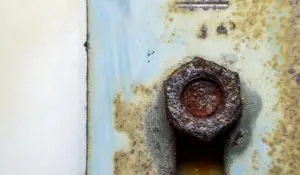
In this way, when two or more different types of metal come into contact in the presence of an electrolyte, a galvanic cell is formed since these metals have different reduction potentials. In addition, there are many other types of galvanic corrosion caused by materials of different compositions.
3. Composition Cells
Also called deposit attack or crevice corrosion. It occurs in small cavities formed by the contact between a piece of metal equal to or different from the first, or a non-metallic element. This type of rust is common in pipes or places where standing water can remain, such as gaskets.
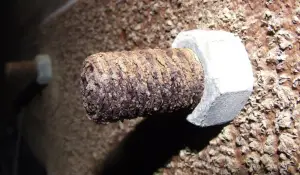
The corrosion accumulates more quickly in cracks and crevices of a construction or a vehicle or structural joints. This rust is the deterioration of parts of a metal surface at different speeds, due to which parts of the surface come into contact with different concentrations of the same electrolyte. In other words, deterioration at one point is faster than at the other point.
4. Dynamic Stress
It is also known as stress cells, except that the stresses are cyclical. Repeated charging and discharging are generally an acceleration in the process of corrosion.
The stresses can be the result of cracking loads due to stress concentration, or they can be caused by the type of residual or assembly stresses from manufacture. Residual stresses can be reduced by tempering.
5. Filiform
This rust gets directly under the paint layer and spreads directly under it. It can spread both in breadth and depth and behind the light of the surface layer of paint. The main cause is water and humidity. This type of rust is the theme of this article.
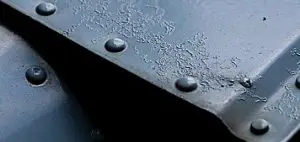
Filiform or thread-like corrosion is the attack on the metallic substrate that occurs under the paint layer and is characterized by developing in the form of filaments.
Therefore this type of corrosion always occurs in painted metals such as steel, aluminum, magnesium, and zinc.
How Does Rust Evolve Under Paint?
It starts from a defect in the paint layer and evolves in the form of strands under that layer. As the rust advances, it tends to form blisters due to the union of these strands. The result is the separation of the layer or chipping of the enamel from the substrate, therefore losing its protective capacity.
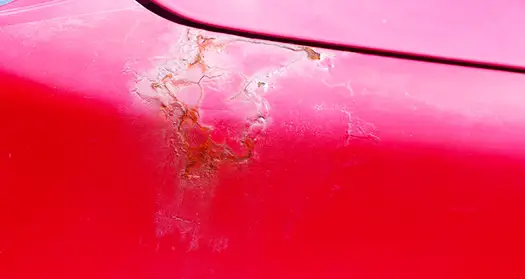
Its actions at first are almost impossible to notice. Over time, the deeper the corrosion eats into the metal, the more the metal deforms. As a result, the paint itself, which is attached to it, also changes. Only in such a situation does the presence of plaque become obvious, but by this time corrosion can already develop very strongly.
If the part cannot be changed, then to solve the problem, you will need to clean the metal from the paint. Otherwise, it will be more difficult to cope with rust. Moreover, it is necessary to remove the paint carefully, because some small pieces of the paint and varnish layer can hide a surviving stain of corrosion under it, which will then grow again.
Why Does Rust Occur Under The Paint?
Although the reason for this kind of corrosion is not well understood, it is known that certain factors contribute to its initiation. They are as follows:
- The relative humidity of the air if it is above 60% (marine environments)
- High ambient temperature.
- Presence of chlorides in the air (again marine environments, industrial environments)
- Sulfate ions, generally present in industrial environments.
In the case of steel, the permeability of oxygen through the film plays an important role in the speed of propagation of corrosion. For this reason, this phenomenon is highly dependent on the coating applied.
In the case of aluminum, this speed is independent of the type of paint and occurs in a tree-like manner.
In extruded aluminum, filiform corrosion grows following the extrusion lines.
Recommendations to Avoid Rust under Paint

These would at least reduce the likelihood of filiform rust:
- In the case of aluminum profiles, it is recommended that their composition be adequate for architectural applications.
- Edges and corners are compromised areas where filiform corrosion often starts. To have good coverage of these areas a corner radius of – at least – 0.5 mm is recommended.
- It is advisable not to exceed 16 hours from the end of the pre-treatment and the painting process. Half-processed products should be stored in dry places and protected from moisture and shocks.
- Before assembly check that there are no defects in the film.
- Apply corrosion inhibitors
Note: Corrosion inhibitors are various chemicals that are applied to metal surfaces and act as a protective layer. This coating, although temporary, is effective, and can be renewed regularly so that its effect is not lost.
Final Thoughts
In most coated metals, rust develops under a layer of paint. When this happens, it will be more effective to remove both the paint and varnish layer and the rust layer. After that, treat with corrosion inhibitors, and only then re-paint.

